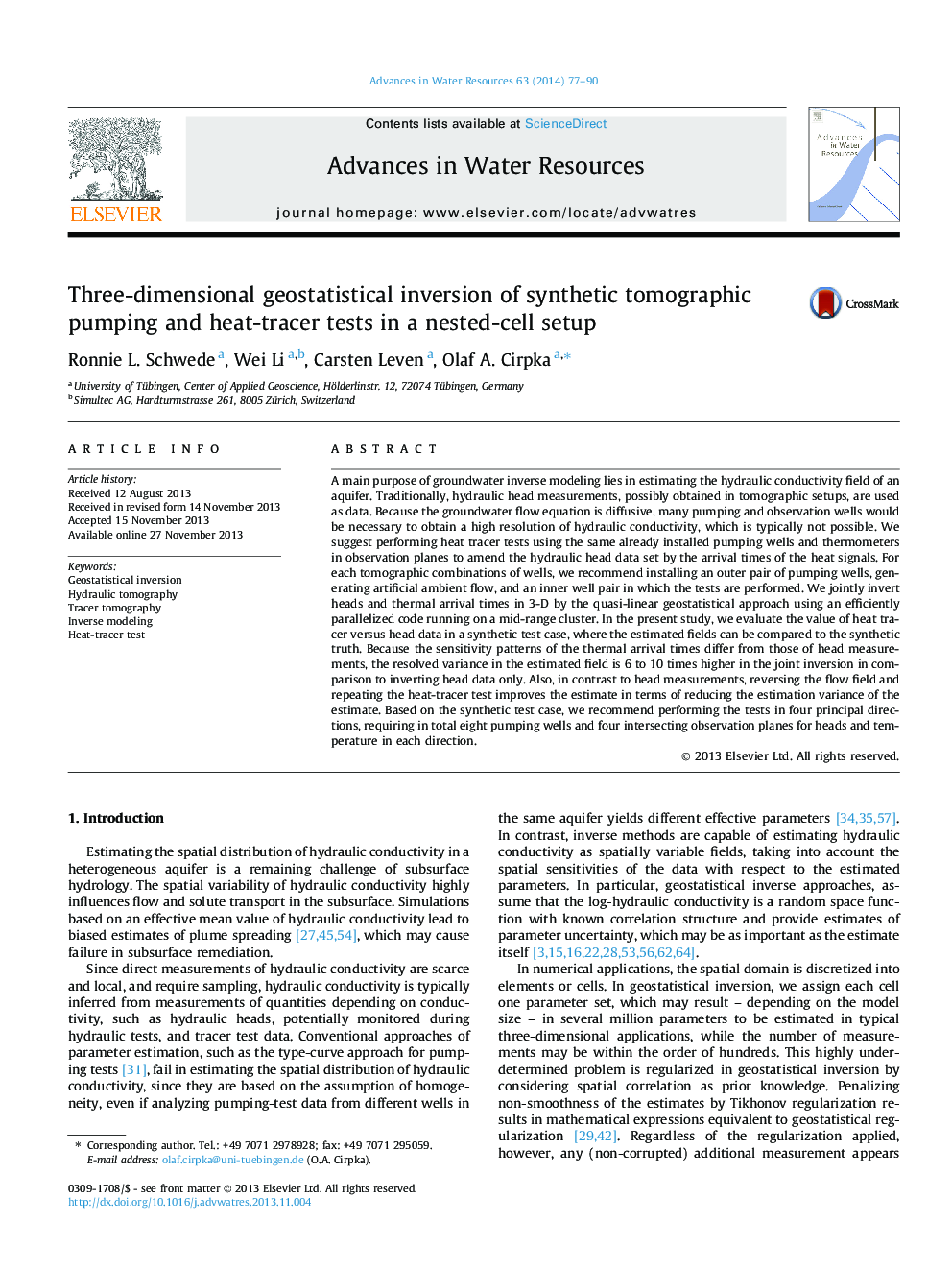| کد مقاله | کد نشریه | سال انتشار | مقاله انگلیسی | نسخه تمام متن |
|---|---|---|---|---|
| 4525550 | 1625646 | 2014 | 14 صفحه PDF | دانلود رایگان |
• We infer hydraulic conductivity from hydraulic heads and heat-tracer arrival times.
• Geostatistical inversion is implemented using parallelization on two levels.
• We suggest a nested-cell approach of two injection and two extraction wells.
• Adding arrival times of heat-tracer tests improves the estimates of inversion.
A main purpose of groundwater inverse modeling lies in estimating the hydraulic conductivity field of an aquifer. Traditionally, hydraulic head measurements, possibly obtained in tomographic setups, are used as data. Because the groundwater flow equation is diffusive, many pumping and observation wells would be necessary to obtain a high resolution of hydraulic conductivity, which is typically not possible. We suggest performing heat tracer tests using the same already installed pumping wells and thermometers in observation planes to amend the hydraulic head data set by the arrival times of the heat signals. For each tomographic combinations of wells, we recommend installing an outer pair of pumping wells, generating artificial ambient flow, and an inner well pair in which the tests are performed. We jointly invert heads and thermal arrival times in 3-D by the quasi-linear geostatistical approach using an efficiently parallelized code running on a mid-range cluster. In the present study, we evaluate the value of heat tracer versus head data in a synthetic test case, where the estimated fields can be compared to the synthetic truth. Because the sensitivity patterns of the thermal arrival times differ from those of head measurements, the resolved variance in the estimated field is 6 to 10 times higher in the joint inversion in comparison to inverting head data only. Also, in contrast to head measurements, reversing the flow field and repeating the heat-tracer test improves the estimate in terms of reducing the estimation variance of the estimate. Based on the synthetic test case, we recommend performing the tests in four principal directions, requiring in total eight pumping wells and four intersecting observation planes for heads and temperature in each direction.
Journal: Advances in Water Resources - Volume 63, January 2014, Pages 77–90
